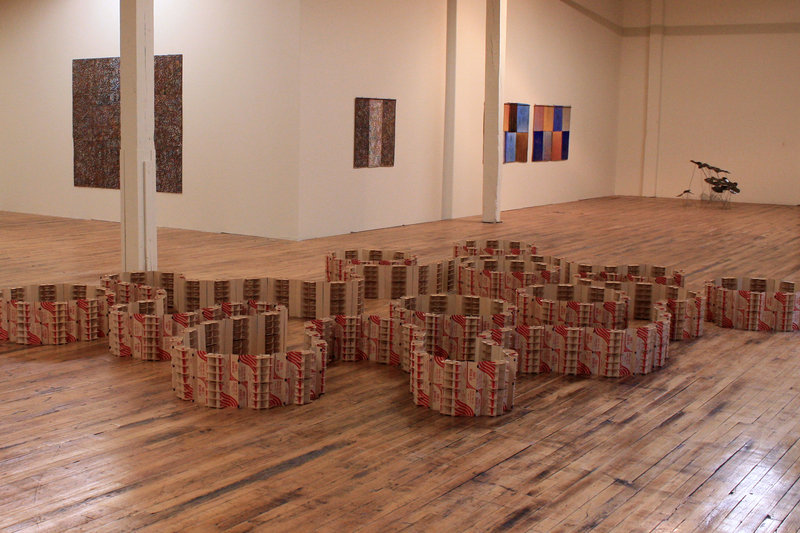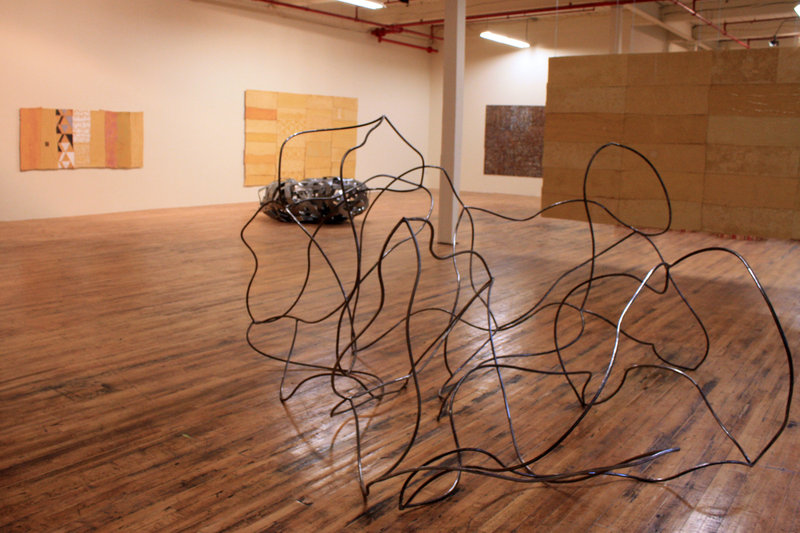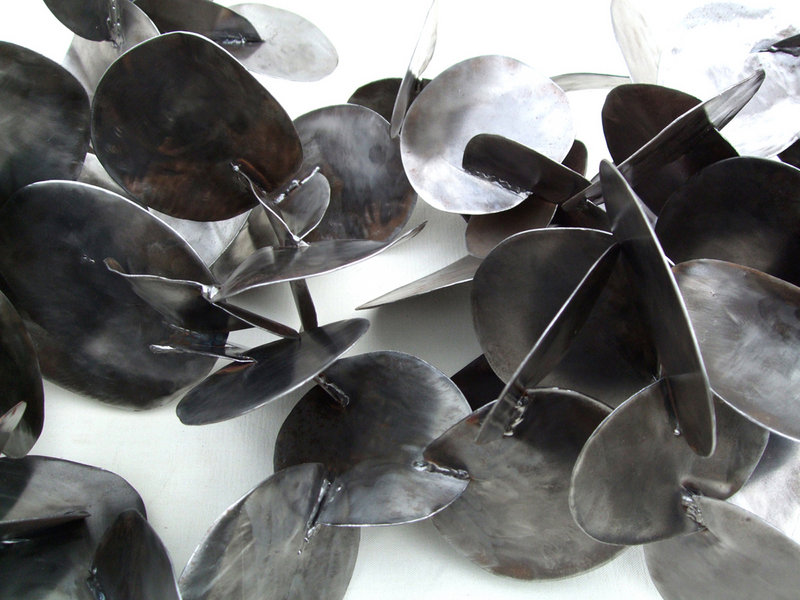One of the most obvious and yet oddest things about Brunswick’s Coleman Burke Gallery is the fact that no one sits to guard or supervise the art in the expansive, museum-like space.
This seemingly simple quirk, however, has subtle but salient effects on your viewing experience. It is a refreshing expression of trust in humanity on the part of the organizers and the artists. And it is liberating to experience art without someone keeping an eye on you.
Most people don’t like it when others read over their shoulders. I feel that way about art.
Recently, the Frontier Cafe’s expansion into the Coleman Burke space has made the gallery better for showing 2-D work. It also adds a bit of drama to the space by adding a corner around which you can’t see.
The current show, “Multiples,” features the work of three Maine artists: Mildred Johnson, George Mason and Isabelle Pelissier. The work is interesting, spare, playful and anything but saccharine or precious. And it looks terrific in the space.
The name of the show straightforwardly echoes the logic of the work — all of which engages with the idea of repeated elements. Yet the title is subtle cover for the sophisticated conceptualism these artists tap into with their repetitive strategies.
One of the most radical “inventions” of art of the past century was modularity — the use of repeated, identical elements to create a work of art. Modularity is a surprisingly critical component of Modernist art and the development of Post-Modernism. (Think of Pointillism, Cubism, De Stijl, Russian Constructivism, Op Art, Minimalism, etc.)
Johnson’s “Twenty-Two Variations” is a fun and successful work of modular art. It features about 220 old-school egg cartons (I couldn’t tell if they were old found objects or newly printed with outdated information) standing on end and attached to each other with binder clips. The bulk of the cartons made a single, winding, closed form with three circles of 10 cartons on the inside and four on the outside.
The mysteries of the piece and its possibilities are fascinating: Fortress? Osmosis? System? Or just play? I came up with so many readings so quickly that the only thing I could conclude is that the vast majority of my ideas no doubt had nothing to do with Johnson’s thinking.
Johnson’s other two pieces are no less playful. One is a corner wall sculpture of old wooden hoops that build on the substance of their shadows for visual support. The other is a miniature city built of old washboards. It has all the fantastical magic of a child’s creation despite being resplendently ironic and witty.
I connected the least with Pelissier’s metal sculptures, and yet they clearly exude confident, strategic intelligence. Her “Petula,” for example, is an organic, plant-like piece comprising 15 welded-steel modular groups of conjoined, petal-sized forms — a sort of cubist eucalyptus.
The way the piece reaches over the edge of the low plinth reveals a sophisticated understanding of modernist sculpture (i.e., Tony Caro), but to me, it feels a bit sprawled and visually busy.
Pelissier’s work in general hides its modular germination. It was only after I read the object list that I even realized that her large “Clouds 9” was made up of multiple pieces. While I like it when art holds content in reserve, I think it’s too bad that Pelissier’s achievement isn’t more obvious from a casual viewing.
My favorite thing about “Multiples” is seeing Mason’s work in a context that plays to his strengths. I recently challenged it a bit gravely in relation to Gabriella d’Italia’s brilliant fibers pieces at CMCA. In “Multiples,” however, Mason is not only being shown with artists whose content reinforces his own, but among whom his works really stand out for the right reasons. With art, context can sometimes make all the difference.
Mason’s works tend to be large abstractions of monochromatic, overlapping panels of burlap that have been imbued with plaster (often cast) and then painted with casein (milk-based) and encaustic (wax-based) paints. My favorites are the ones, like the giant ochre “Great Divide,” that use many of the same panels.
When color doesn’t create an overall composition, Mason’s exquisite textures and understated gestures get to guide the visual experience of the works. In this piece, there are matched pairs of panels in which a zigzag or a decorative band travel between two of the panels, giving hints just forceful enough to reveal the well-conceived, overall formal structure.
Mason’s works in “Multiples” will all reveal satisfying internal logic if you give them a couple of minutes. When that logic isn’t obvious, it’s usually because you can too easily get caught up in their ancient-seeming, fresco-like textures.
“Multiples” is visually satisfying and beautifully installed. It’s easy on the eyes and yet, if you want to challenge yourself, the work has conceptual depth.
Freelance writer Daniel Kany is an art historian who lives in Cumberland. He can be contacted at: dankany@gmail.com
Send questions/comments to the editors.





Success. Please wait for the page to reload. If the page does not reload within 5 seconds, please refresh the page.
Enter your email and password to access comments.
Hi, to comment on stories you must . This profile is in addition to your subscription and website login.
Already have a commenting profile? .
Invalid username/password.
Please check your email to confirm and complete your registration.
Only subscribers are eligible to post comments. Please subscribe or login first for digital access. Here’s why.
Use the form below to reset your password. When you've submitted your account email, we will send an email with a reset code.